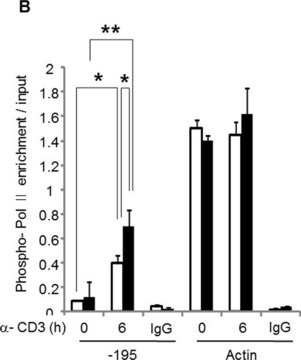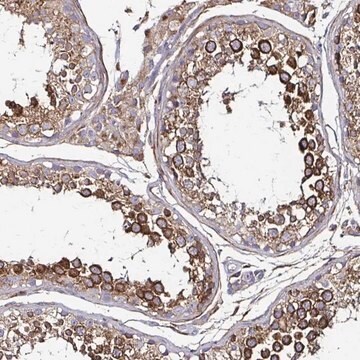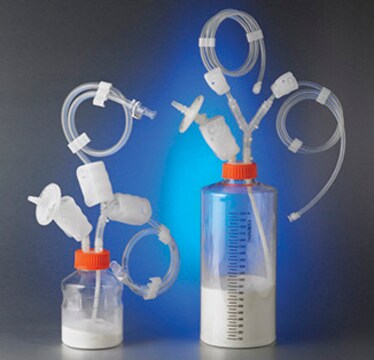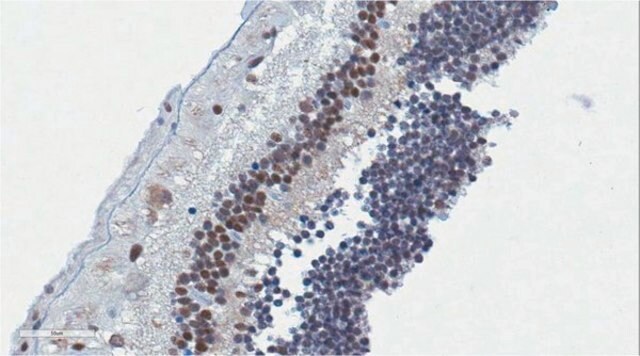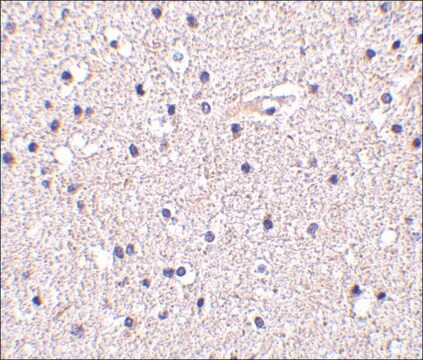MAB5556
Anti-Nicastrin Antibody
ascites fluid, clone 9C3, Chemicon®
About This Item
Recommended Products
biological source
mouse
Quality Level
antibody form
ascites fluid
antibody product type
primary antibodies
clone
9C3, monoclonal
species reactivity
rat, human, mouse
manufacturer/tradename
Chemicon®
technique(s)
immunocytochemistry: suitable
immunoprecipitation (IP): suitable
western blot: suitable
isotype
IgG2b
NCBI accession no.
UniProt accession no.
shipped in
dry ice
target post-translational modification
unmodified
Gene Information
human ... NCSTN(23385)
Specificity
Immunogen
Application
Immunocytochemistry
Immunoprecipitation. Suggested tissue/cell lysis buffer is 1% Triton X100 or 2% CHAPS. Suggested final reaction volume is 1000 μL with a final protein concentration in the reaction mix of 1 mg/mL. Suggested incubation time is overnight at 2-8°C with rotating. The antibody is known to co-precipitate in CHAPS: presenilin, Aph-1 and Pen-2. Optimal working dilutions must be determined by end user.
Legal Information
Not finding the right product?
Try our Product Selector Tool.
Storage Class Code
10 - Combustible liquids
WGK
WGK 1
Flash Point(F)
Not applicable
Flash Point(C)
Not applicable
Certificates of Analysis (COA)
Search for Certificates of Analysis (COA) by entering the products Lot/Batch Number. Lot and Batch Numbers can be found on a product’s label following the words ‘Lot’ or ‘Batch’.
Already Own This Product?
Find documentation for the products that you have recently purchased in the Document Library.
Our team of scientists has experience in all areas of research including Life Science, Material Science, Chemical Synthesis, Chromatography, Analytical and many others.
Contact Technical Service
